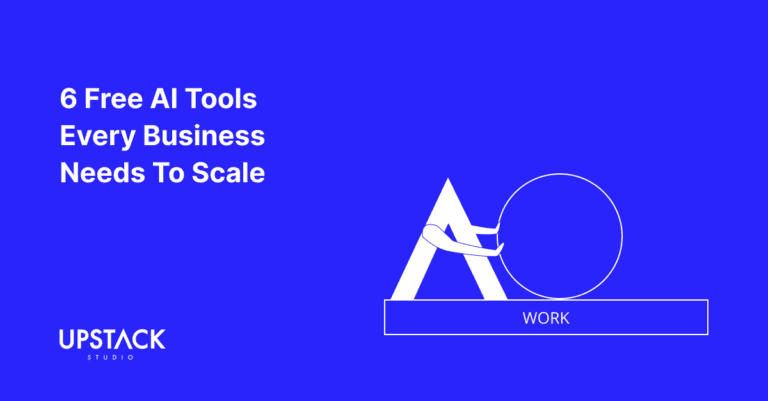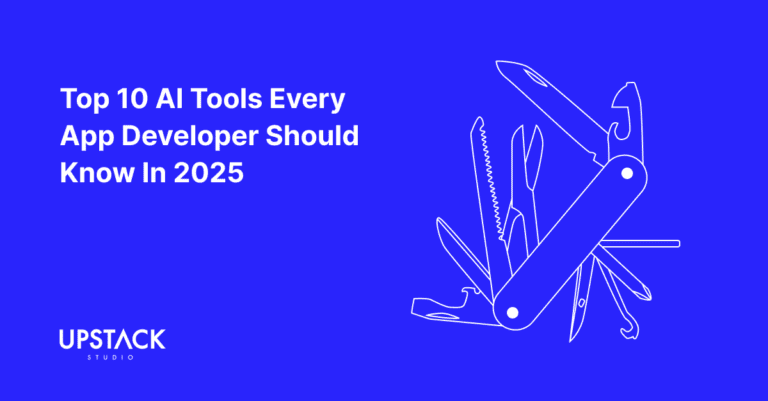It’s 2024, and generative AI is still extremely valuable for software development.
However, you can’t just connect an API to a five-minute interface and call yourself a founder!
If you’re going to build an AI-powered app, you better do something along the lines of our list of GPT 4-powered apps which featured a pair of AI-powered sunglasses!

Aside from building an AI-powered app, another valid use case is to integrate AI into already successful apps and SaaS, giving you an app with AI-powered features.
When done right, it turns an already great software product into something amazing.
In today’s post, we’ll take a look at three such examples of AI integration.
1. Canva Magic Studio

Canva is already of the world’s top graphic design platforms and the Canva Magic Studio uses AI to enhance their already robust content creation features.
Hint: It’s not real magic but utilizes Canva’s extensive template library.
Key Features:
- AI-Driven Search: Describe what you need, and AI finds the right template.
- Content Repurposing: Automatically adjust designs to different formats, dimensions, and languages.
- Image Generation: Create images directly in Canva if stock photos aren’t available.
- Powerful Editing Tools: Features like image expansion, background removal, and more.
- Video Integration: Generate and incorporate videos into designs.
- Talking Head Videos: Create character-based videos to match your brand.
- AI Text Generation: Automatically generate and style copy, aligning with your brand voice.
- Magic Morph: Adjust fonts and text appearance easily through AI.
Our favorite Canva AI integration: Magic Morph
So, Canva has an AI feature called Magic Morph that reminds us text is not just for content, but design.

You can use a prompt to describe the desired appearance of text, and Canva’s AI automatically changes the font and style for you.
Yes, you can manually choose from Canva’s extensive font and effects library, but Magic Morph saves time by finding and applying the perfect look for you.
2. ClickUp Brain

ClickUp is already great at improving productivity, and its ClickUp Brain integrates AI to make work, project, and task management even more effortless.
Again with the misleading names – sadly there’s no real brain here, just AI!
Key Features:
- Roles: AI-powered Knowledge Manager, Project Manager, and Writer roles streamline your workflow.
- Task Automation: Automatically create tasks and subtasks with detailed descriptions.
- Document Summarization: Summarize documents, track progress, and identify who made changes.
- AI Transcriptions: Communicate via audio or video messages with auto-transcriptions to avoid miscommunication.
Our favorite ClickUp AI integration: Automated Standups
ClickUp Automated Standups help you quickly summarize recent tasks for you or your team, turning five-minute stand-ups into 60 second updates.
Up to ten team members can:
- generate a summary of their tasks
- set certain formats such as a bulleted list, short summary, or detailed report, and
- see updates from their team members
After generating the summary, you can create tasks or documents, copy the text, or refine the summary further with additional instructions.
The developers in us rejoice!
3. Grammarly AI

Some readers will think a writing tool is the most boring and generic way to use AI.
Firstly, don’t dismiss the potential of ‘lame’ ideas – boring apps can make millions!
Secondly, the prevalence of AI writers is specifically why we’re so impressed by Grammarly.
You’d think that in a world with ChatGPT, Grammarly wouldn’t exist.
Instead, Grammarly hit 125 million in revenue in 2024, a 20% increase from 2023!
Rather than fighting AI, Grammarly has embraced and integrated AI into its tech stack to offer multiple features that further simplify writing and collaboration:
- Grammarly Go: Integrates with various platforms such as email, Slack, Skype, and Google Docs, allowing Grammarly AI to generate messages with specific tones like friendly, firm, or sympathetic. This is especially useful for teams in large companies to maintain a consistent tone.
- Style Guide Adherence: Learns and applies a team or company’s style guide, helping employees maintain consistent writing standards.
- Automated Drafts: Can write entire drafts of emails or other texts, saving time for users who only need to proofread the generated content.
- Clarity Improvements: Suggests changes to improve the clarity of emails and other communications.
- Privacy Assurance: Ensures client information is kept confidential and is not used to train other AI models or sold to third parties.
Our favorite Grammarly AI integration: AI Writing Tools
Grammarly offers a range of AI writing tools, likely intended as lead magnets, which are not part of the core product but cater to specific types of writing tasks.

All in all, we count 23 different AI writing tools, which means Grammarly has 23 separate lead magnets for their main product.
Why These AI Integration Examples Work so Well
Canva, ClickUp, and Grammarly have absolutely nailed how to integrate AI into their software because they successfully leverage the specific benefits of generative AI without suffering its shortcomings.
In our opinion, these are the three strengths they have taken full advantage of.
1. Making it Easier to Use the Software
This can be done by handling the analyzing and summarizing of large amounts of data to make recommendations – that’s most AI assistants.
Or AI can help by lowering the skill ceiling needed to fully benefit from the software – like with Canva’s Magic Studio allowing users to easily get the right templates and font styles.
2. Reducing the Risk of Human Error
Machines are generally better than humans at repetitive tasks as they don’t lose focus or get bored.
So say you have a process that needs to be done frequently and has a large potential ripple effect.
Using AI to help with quality control gives the assurance that these processes won’t deviate due to users getting complacent – like Grammarly forcing the company style guide down everyone’s throats!
3. Reducing Time Taken to Complete In-App Tasks
Apps digitize manual tasks to go faster; AI automates digital tasks so they go EVEN FASTER.
This is especially true for non-core functions of a business that needs to get done.
Nobody wants to waste lots of time doing it, so if AI can do most of it for them at the press of a button, why would they not go for it?
How to Enhance YOUR Apps with AI Integration
So as you consider where and how to integrate AI into your products, consider how it can make life easier for a user, reduce the chances of mistakes, and automate low-level tasks.

And of course, this can only work if you’ve confirmed the core solution is already validated.
AI won’t make a crap solution good.
But it can make a good solution great.
Hey there stranger, thanks for reading all the way to the end. Consider joining our mailing list for a one-stop resource on everything from micro SaaS validation all the way to execution and promotion. Get a nifty list of questions to ask app developers when you sign up!
App Developer Interview Questions Template
Download this template now so you know exactly what to ask App Development Agencies! Let us know where should we send it through the form below.




